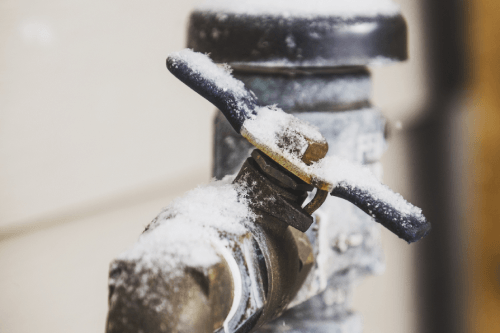Avoiding Your Pipes from Freezing: Best Tips
Avoiding Your Pipes from Freezing: Best Tips
Blog Article
What are your insights and beliefs about Winter Plumbing Precautions: Preventing Frozen Pipes?

Cold weather can ruin your pipes, especially by freezing pipes. Below's how to avoid it from occurring and what to do if it does.
Introduction
As temperature levels decline, the threat of frozen pipelines boosts, potentially resulting in expensive fixings and water damage. Understanding exactly how to avoid frozen pipelines is critical for home owners in cool environments.
Understanding Frozen Pipes
What causes pipelines to freeze?
Pipes freeze when exposed to temperature levels listed below 32 ° F (0 ° C) for prolonged durations. As water inside the pipes freezes, it expands, taxing the pipeline wall surfaces and possibly creating them to break.
Threats and problems
Icy pipes can cause water system interruptions, building damage, and expensive fixings. Burst pipes can flood homes and cause extensive structural damage.
Signs of Frozen Piping
Determining frozen pipelines early can stop them from rupturing.
How to identify icy pipelines
Try to find reduced water flow from taps, unusual smells or sounds from pipes, and noticeable frost on exposed pipelines.
Avoidance Tips
Insulating susceptible pipes
Cover pipelines in insulation sleeves or utilize warm tape to shield them from freezing temperature levels. Concentrate on pipes in unheated or outside locations of the home.
Heating methods
Keep indoor spaces appropriately warmed, specifically locations with pipes. Open cabinet doors to permit cozy air to circulate around pipelines under sinks.
Securing Outdoor Pipes
Garden hoses and exterior faucets
Separate and drain garden hoses before winter. Set up frost-proof spigots or cover outside taps with protected caps.
What to Do If Your Pipelines Freeze
Immediate actions to take
If you suspect icy pipes, keep taps available to soothe pressure as the ice thaws. Use a hairdryer or towels soaked in warm water to thaw pipes gradually.
Long-Term Solutions
Architectural adjustments
Consider rerouting pipelines away from outside walls or unheated locations. Add added insulation to attics, basements, and crawl spaces.
Updating insulation
Invest in top notch insulation for pipes, attics, and wall surfaces. Proper insulation helps preserve regular temperatures and decreases the risk of frozen pipes.
Final thought
Avoiding frozen pipes requires aggressive measures and quick responses. By understanding the causes, indicators, and preventive measures, homeowners can shield their pipes throughout winter.
6 Proven Ways to Prevent Frozen Pipes and Protect Your Home
Disconnect and Drain Garden Hoses
Before winter arrives, start by disconnecting your garden hoses and draining any remaining water. Close the shut-off valves that supply outdoor hose bibs and leave the outdoor faucet open to allow any residual water to drain. For extra protection, consider using faucet covers throughout the colder months. It’s also important to drain water from any sprinkler supply lines following the manufacturer’s directions.
Insulate Exposed Pipes
Insulating your pipes is an effective way to prevent freezing. Pipe insulation is readily available at home improvement stores and is relatively inexpensive. Pay close attention to pipes in unheated areas such as the attic, basement, crawl spaces, or garage. Apply foam insulation generously to create a buffer against the cold. You can also wrap your pipes in heat tape or thermostat-controlled heat cables for added warmth.
Seal Air Leaks
Inspect your home for any cracks or openings that could let in cold air. Seal any holes around the piping in interior or exterior walls, as well as the sill plates where your home rests on its foundation. Additionally, make sure to keep your garage door closed unless you’re entering or exiting. Leaving it open creates a significant air leak that can lead to frozen pipes.
Allow Warm Air Circulation
During cold snaps, it’s essential to allow warm air to circulate evenly throughout your home. Leave interior doors ajar to promote better airflow. Open kitchen and bathroom cabinets to help distribute heat consistently around the rooms. If you have small children or pets, be sure to remove any household chemicals or potentially harmful cleaners from open cabinets for safety.
Let Faucets Drip
A small trickle of water can make a big difference in preventing ice formation inside your pipes. When temperatures drop significantly, start a drip of water from all faucets served by exposed pipes. This continuous flow helps prevent the water from freezing. Additionally, running a few faucets slightly can relieve pressure inside the pipes, reducing the chances of a rupture if the water inside does freeze.
https://choateshvac.com/6-proven-ways-to-prevent-frozen-pipes-and-protect-your-home/

Hopefully you enjoyed our topic on How to Prevent Your Pipes From Freezing. Thanks a ton for taking the time to browse our short article. Are you aware of another person who is involved in the subject? Why not share it. Thank you for taking the time to read it.
View Report this page